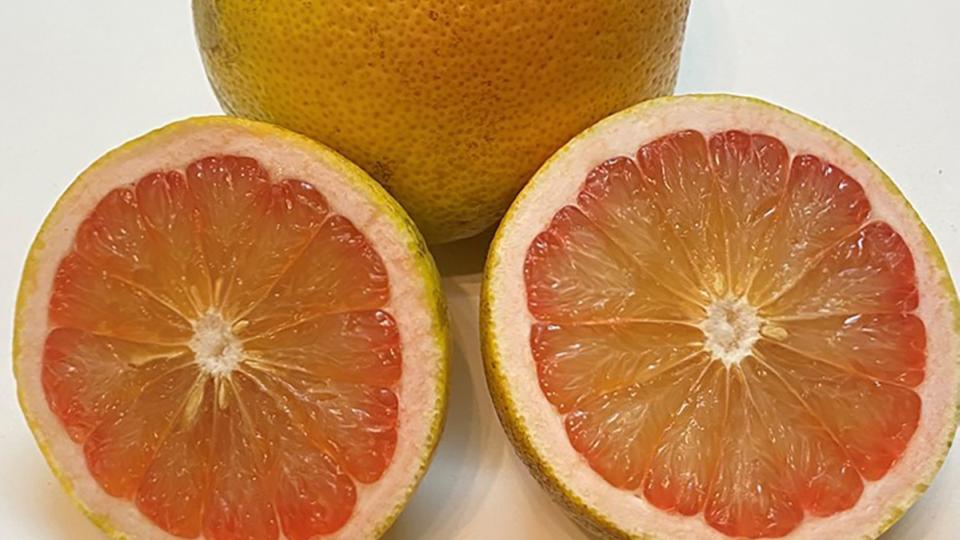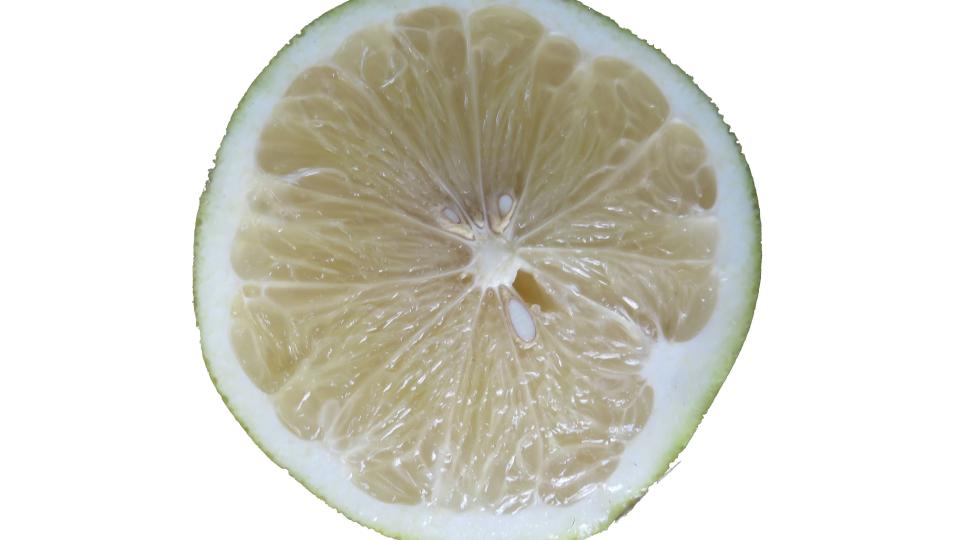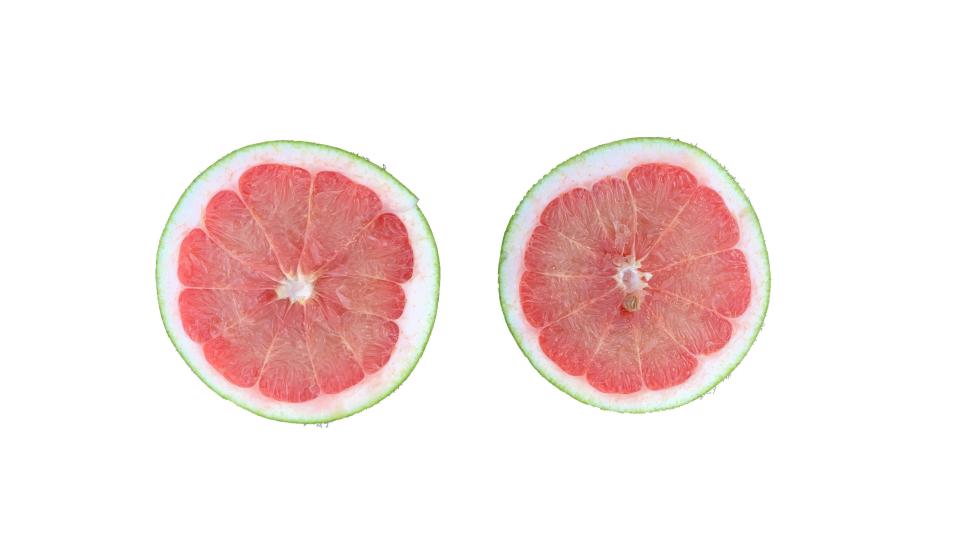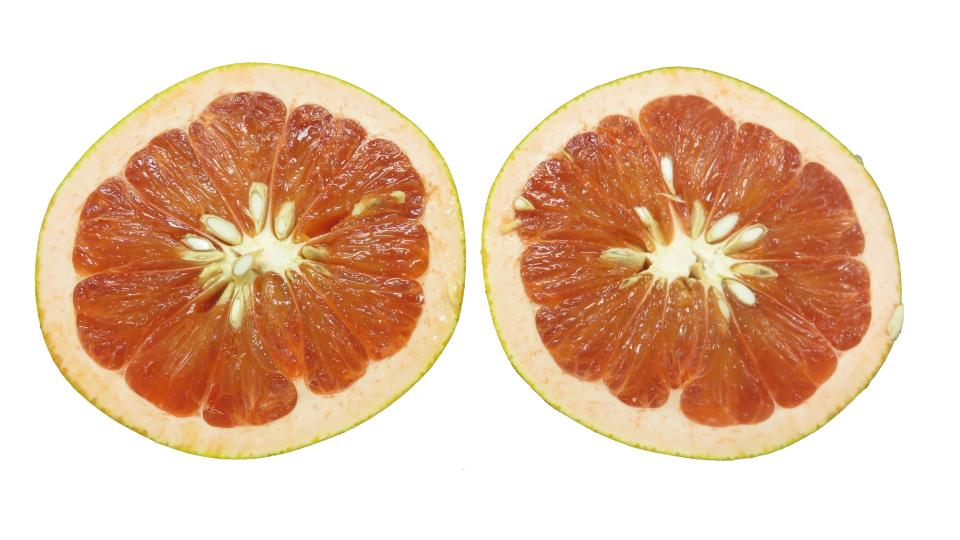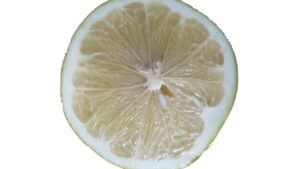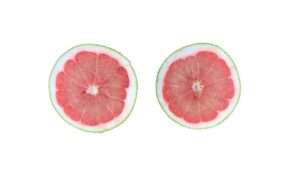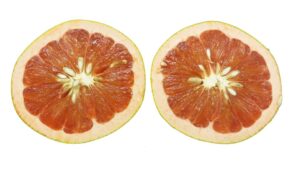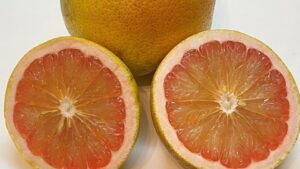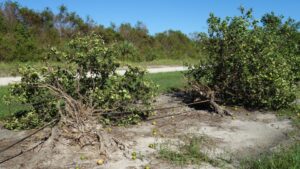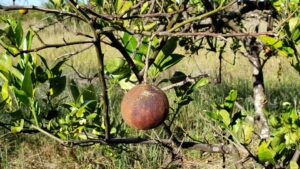Good to Grow: Check out the Latest Developments on the Grapefruit Front
The January 2022 issue of Florida Grower’s “Citrus Nursery Source” column focused on orange-like selections within Florida breeding programs. The following grapefruit-like selections are in various stages of development. Like orange, commercial grapefruit varieties emerged from a very narrow genetic range, leaving them susceptible to disease.
One approach to resolving this issue involves tapping into the rich genetic base of pummelo and other citrus varieties to create grapefruit-like fruit that may have the rigor to survive, and perhaps thrive, in an HLB-endemic environment. In some cases, this entails recreating the grapefruit from its ancestral parents. Some of the selections are close to commercial quality; others exhibit qualities and traits that represent incremental improvement and can be used in the breeding process.
Some true grapefruit are also showing early signs of useful levels of tolerance. Though this needs to be thoroughly tested in the field, true grapefruit must continue to be an element of the grapefruit development process until workable solutions are found.
This month, we will take a bird’s-eye view of several selections worth noting.
USDA-ARS
Reported by Dr. Ed Stover and Dr. Matt Mattia
Selection 1
A pummelo hybrid that is very much like a white grapefruit with a mild flavor. The tree seems more tolerant of HLB and Canker than any true grapefruit. It has been shoot-tip grafted and is in a small, replicated field trial. Fruit are a similar size and shape to grapefruit and similar internal texture with more rag than typical grapefruit from tough segment walls and has a field Brix of around 8. The fruit is quite seedy. Crosses have been made to introduce red or pink color into this selection by crossing back to true grapefruit. It is entered into the parent tree program for cleanup.
Selection 2
This ‘Pink GF’-like hybrid is a new selection. It is an irradiated variant of another pummelo hybrid. The fruit are larger than most grapefruit but smaller than most pummelos with a thin skin and juicy flesh. It has a mild pleasant taste with a hint of grapefruit tonic-like bitterness. It has shown little canker to date and seems less HLB-sensitive than true grapefruit. This selection is low seeded and is being assessed for commercial potential. It will need additional advanced stage trialing to confirm commercial yields under HLB pressure.
Selection 3
This is a red grapefruit-like hybrid. The fruit look and taste very similar to grapefruit and have an external blush color. Fruit are seedy with Brix around 10 and have a pleasant floral flavor in addition to typical grapefruit bitterness. The tree seems to be more tolerant to HLB than true grapefruit but is susceptible to canker. This selection was irradiated in hopes of inducing seedlessness and is planted at the Whitmore Foundation Farm near Leesburg. It is entered into the parent tree program for cleanup.
UF/IFAS CREC Plant Improvement Program
Reported by Dr. Jude Grosser
Selection 1
This hybrid is more HLB tolerant than grapefruit and has no problem with canker. It is through Parent Tree Program (PTP) and approved for release by the IFAS Cultivar Release Committee. C2-5-3 usually reaches 10 Brix and 15 ratio in mid-September or early October, so it is much earlier than our grapefruit. One grower has planted a trial under MTA (material transfer agreement).
Its sister clone is also through the PTP and is available for trial — similar fruit. Perhaps one will rise to the top.
Selection 2
Though not a hybrid, I also have cybrid ‘Flame’ grapefruit that recently has cleared the PTP. It is a dark-red grapefruit than has been reaching 12 Brix the past few seasons (and this year). It appears to have slightly better HLB tolerance, but this is anecdotal.
Reported by Dr. Fred Gmitter
I have been selecting individuals across the last three to four years from among several families made by crossing diploid seed parents with a few tetraploid, red-fleshed grapefruit breeding parents we developed some years ago. An example of the fruit of one of these selections is Selection 3. In some cases, these are similar to the UF 914, made using a pummelo as a seed parent. However, several of the families were made using other parents that came from previously selected pummelo-grapefruit hybrids; the resulting offspring have been more grapefruit-like, and less pummelo in character.
The first criteria for selection has been the relative endurance of the trees against HLB. None are resistant, but we have been selecting from the best performing trees, producing the best quality, and the fewest off-type fruit resulting from HLB. We have selected those with better external appearance, flatter fruit shape with minimal sheep nosing, thinner rinds, seedless, and with deep-red flesh. Of course, eating quality is important, so we have selected those with higher Brix, lower acid, yet typical grapefruit aroma. A few of these have come through the Department of Primary Industries (DPI), but several more are remaining to complete their cleanup. Small plantings have been made, but several more are being planned as the materials are released from DPI, and we can propagate new trees.
Dr. Jose Chaparro has also done some work in the grapefruit-like arena. Information was not available by the publication deadline, but may be included in future submissions.
Grapefruit is a tough nut to crack. Time is not on our side, but this article intends to provide a snapshot of work in progress toward the ultimate goal of restoring one of Florida’s preeminent fresh citrus crops to its former glory.





